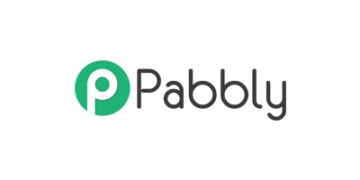What if your next investment could drive both profit and positive change? The rise of impact investing proves ethics and earnings aren’t mutually exclusive. Forward-thinking companies like Google and Dell showcase the power of green innovation—carbon-neutral operations and closed-loop recycling systems set new industry standards.

Consumer demand fuels this shift. 72% of buyers prioritize brands with verified eco-conscious practices, creating a lucrative market for ethical ventures. Meanwhile, the U.S. Department of Energy offers over $40 billion in loans for clean energy projects, unlocking unprecedented opportunities.
This guide explores actionable pathways to align capital with purpose. From federal incentives to private-sector breakthroughs, discover strategies that turn sustainability into a competitive edge.
Key Takeaways
- Global leaders like Google and Dell prove sustainability boosts brand value.
- 72% of consumers favor eco-conscious companies, shaping market trends.
- The DOE’s $40B+ loan program supports clean energy initiatives.
- Impact investing delivers financial returns while driving social good.
- Millennials are 2x more likely to engage in ethical investments than Baby Boomers.
Understanding Impact Investing for Sustainable Businesses
The $1.5T impact investing market proves ethics and returns coexist. This approach deploys capital to generate measurable social and environmental ROI alongside financial gains. Unlike traditional ESG frameworks, it prioritizes tangible outcomes—like NSF’s $900M annual research grants advancing sustainable practices.
What Is Impact Investing?
Impact investing targets ventures with clear environmental impact. The EPA’s $650M Brownfields Program turns contaminated sites into renewable energy hubs. Kiva’s 0% interest loans support 14K green businesses globally. These models show how funding opportunities drive systemic change.
Why Sustainability Matters in Business Funding
Ignoring sustainable practices risks 30% premium erosion by 2025. The NSF’s grants highlight how financial assistance accelerates innovation. From solar farms to circular economies, aligning capital with purpose isn’t optional—it’s profitable.
How to Fund Sustainable Businesses: Key Strategies
Three proven pathways exist for fueling environmentally conscious ventures. Each offers distinct advantages for scaling operations while maintaining ecological integrity. Strategic capital deployment turns sustainability goals into measurable outcomes.
Grants for Green Initiatives
The USDA’s Rural Energy for America Program covers 50% of project costs for renewable installations. Federal awards often require matching funds but carry no repayment obligations. This makes them ideal for early-stage prototypes with high environmental impact.
Blended models combine EPA grants with community development loans. The approach reduces risk while accelerating project timelines. Nonprofit partnerships frequently unlock additional funding layers.
Loans and Debt Financing
SBA 7(a) loans provide up to $5 million with 25-year terms for real estate. The program’s 85% guarantee lowers lender risk for qualifying ventures. Amortization schedules align with long-term sustainability payoffs.
Alternative lenders like LendingClub offer APRs from 6.95% for established eco-businesses. Their 4-year terms suit equipment upgrades or efficiency retrofits. Traditional bank financing remains competitive for ventures with 3+ years of revenue.
Crowdfunding and Community Support
Kickstarter campaigns for solar tech achieve 35% success rates—triple the platform average. Community-powered solutions build brand loyalty while securing working capital. Rewards-based models often convert backers into long-term customers.
Regulation CF enables equity crowdfunding up to $5 million annually. This democratizes investment access for local green projects. Transparent impact reporting strengthens ongoing community engagement.
Government Grants and Programs
Federal initiatives unlock capital for ventures that prioritize planet and profit. Over $10 billion in annual allocations support clean infrastructure and green innovation. These government grants create win-win scenarios—businesses scale operations while meeting climate targets.
EPA Grants for Environmental Projects
The Clean Ports Initiative dedicates $3 billion to zero-emission cargo equipment. Port authorities and private operators qualify for 100% funding on electrification projects. Parallel programs like the $5 billion Clean School Bus Program replace diesel fleets nationwide.
Applicants demonstrate measurable emissions reductions through EPA’s online portal. Priority goes to projects in disadvantaged communities. Technical assistance teams help navigate compliance requirements.
Department of Energy Funding Opportunities
DOE’s Loan Programs Office structures financing for renewable energy ventures at three tiers. Early-stage concepts access $50 million, while utility-scale projects secure up to $2.5 billion. The Advanced Energy Projects gateway fast-tracks applications for carbon capture systems.
Industrial decarbonization receives $96 million through EERE’s 2023 allocations. Recipients must show 40% energy intensity reductions. DOE specialists verify project feasibility before disbursement.
SBA Loans for Small Sustainable Businesses
Green-certified small business owners access SBA 7(a) loans with preferential terms. B Corp certification and annual sustainability audits become prerequisites. The BioPreferred Program mandates federal agencies purchase biobased products from qualified vendors.
Loan officers evaluate circular economy models and waste reduction plans. Flexible repayment schedules align with seasonal revenue cycles in agriculture and clean tech sectors.
Corporate and Nonprofit Funding Options
Major corporations and nonprofits now offer powerful funding solutions for eco-conscious ventures. These partnerships combine financial assistance with industry expertise to scale environmental innovations. From tech giants to grassroots networks, diverse models exist to fuel responsible development.
Corporate Sustainability Grants
Microsoft’s Climate Innovation Fund committed $1 billion since 2020 for carbon reduction technologies. Their equity investments target breakthrough solutions in renewable energy and circular systems.
Patagonia’s $20 million Earth Fund supports grassroots activists through corporate grants. Recipients demonstrate measurable impact on biodiversity protection and climate justice initiatives.
Salesforce distributes Sustainability Cloud grants for carbon accounting platforms. Their ecosystem approach helps businesses track emissions while qualifying for additional funding tiers.
Nonprofit Organization Support
The CERES Investor Network mobilizes $29 trillion in assets for clean energy projects. Their accelerator programs fast-track development of circular economy startups with six-month bootcamps.
Amber Grant awards three $10,000 monthly prizes to women-led green businesses. Annual finalists compete for an additional $25,000 bonus through this unique nonprofit organizations model.
GlobalGiving’s Green Business Fund matches contributions dollar-for-dollar. Their platform connects donors with vetted projects achieving verifiable sustainability milestones.
Eligibility Criteria for Sustainable Business Funding
Navigating funding options starts with understanding key qualification benchmarks. Public and private programs prioritize ventures demonstrating measurable ecological benefits. Clear parameters separate qualified applicants from those needing further development.
Business Size and Industry Requirements
The DOE Loan Programs Office mandates 500+ employees for energy infrastructure projects. Smaller ventures target NSF grants requiring business size validation through tax records.
B Lab’s Impact Assessment demands 80+ points for certification across five categories. EPA Pollution Prevention grants use NAICS codes to filter eligible industry sectors like manufacturing (31-33) and waste management (562).
Project Scope and Environmental Impact
Green Seal’s GS-55 standard bans PFAS and formaldehyde in certified products. These sustainable practices become prerequisites for corporate partnership programs.
CDFIs prioritize projects in low-to-moderate income areas or MWBE-owned businesses. USDA Climate-Smart grants require EWG verification of environmental impact metrics like carbon sequestration rates.
Successful applicants align project timelines with funding cycles. They quantify outcomes using standardized measurement frameworks. This strategic approach transforms eligibility criteria from barriers to blueprints.
Applying for Green Business Grants
Securing capital for eco-friendly ventures requires strategic grant applications. The National Science Foundation allocates $190 million annually to projects demonstrating environmental benefits. This funding transforms innovative concepts into scalable solutions.
Successful applicants master two critical phases: proposal development and submission protocols. We’ll explore how to optimize both stages for maximum competitiveness.
Crafting a Winning Proposal
NSF reviewers evaluate submissions using intellectual merit (50%) and broader impacts (50%). Highlight how your project advances scientific knowledge while benefiting society. Case studies from prior awardees prove particularly persuasive.
Structure proposals within the 22-page limit using clear sections. Emphasize measurable outcomes like carbon reduction or energy savings. Quantify projected results with industry-standard metrics.
USDA workshops teach effective grant writing techniques. Their templates help align project development with reviewer expectations. Partnering with research institutions often strengthens technical credibility.
Navigating the Application Process
Begin with SAM.gov registration—a mandatory step taking approximately two weeks. This establishes your eligibility for federal funding opportunities. Maintain updated profiles to avoid processing delays.
Grants.gov Workspace streamlines collaborative applications. Teams can:
- Track real-time edits through NSF’s FastLane system
- Access DOE’s SBIR/STTR portal for Phase I ($256K) or Phase II ($1.6M) submissions
- Upload supporting documents like sustainability certifications
Anticipate four weeks for final submission reviews. Schedule milestones backward from deadlines. This disciplined process ensures all components receive proper attention.
Alternative Financing: Crowdfunding and Kiva Loans
Community-powered financing breaks traditional barriers for green startups. Digital platforms now enable ventures to secure capital directly from supporters worldwide. This democratized approach aligns perfectly with mission-driven businesses seeking both financing and brand advocates.
Platforms for Eco-Friendly Projects
Kickstarter’s all-or-nothing model works best for tangible products like Solar Roadways’ $2.2M campaign. Projects must hit 100% funding goals to receive any capital. Indiegogo’s flexible option keeps partial funds for a 9% fee—ideal for testing concepts.
Kiva’s 0% interest loans showcase community trust. Entrepreneurs like Erin and Leigh-Ann secured $14,500 across two campaigns. Their 30-day public fundraising period proves social underwriting works. Supporters contribute increments as small as $25.
Wefunder enables equity crowdfunding under Regulation CF. The $5M annual cap helps ventures like Flow Hive raise $12.2M. SEC compliance requires financial disclosures but unlocks investor networks.
Tips for a Successful Campaign
Compelling storytelling converts visitors into backers. Highlight environmental impact metrics alongside product benefits. Solar Roadways emphasized CO2 reduction per panel.
Choose platforms strategically. Reward-based crowdfunding suits pre-sales, while Kiva loans fit working capital needs. Flow Hive selected Kickstarter for its maker community.
Engage supporters early. Build email lists before launch. Update backers weekly—transparency fosters trust. These tactics help sustainable ventures thrive through collective action.
Leveraging Funding for Long-Term Sustainability
Transformative capital deployment turns environmental commitments into measurable results. The real test begins after securing resources—converting plans into sustainable practices that deliver continuous value. Industry leaders now treat ecological responsibility as a core operational discipline.
Implementing Green Practices
Operationalizing sustainability requires both technology upgrades and process redesign. ENERGY STAR Portfolio Manager helps track building efficiency across 25+ metrics. This free tool identifies quick wins like lighting retrofits or HVAC optimizations.
- Retrofitting equipment with ENERGY STAR certified alternatives
- Adopting ISO 14064 standards for greenhouse gas tracking
- Integrating Salesforce Sustainability Cloud for real-time ESG monitoring
Measuring and Reporting Impact
Transparent verification separates meaningful progress from greenwashing. Measuring impact through GRI Standards—used by 73% of Fortune 250 firms—builds stakeholder trust. These frameworks convert operational data into actionable insights.
Leading organizations combine multiple tools:
- CDP questionnaires for climate disclosure benchmarking
- SimaPro software for product life-cycle assessments
- Cradle to Cradle Certified™ for material health verification
The sustainability reporting landscape continues to evolve. Proactive businesses stay ahead by aligning metrics with investor priorities and regulatory trends. This disciplined approach turns environmental stewardship into competitive advantage.
Success Stories: Businesses That Secured Green Funding
Visionary companies prove green funding creates lasting impact. These trailblazers transformed environmental commitments into scalable innovation, offering blueprints for future ventures.
Rivian’s $1.3 billion DOE loan showcases electric vehicle potential. The Advanced Technology Vehicles Manufacturing program accelerated their R1T truck production, proving renewable energy investments yield commercial returns.
Imperfect Foods scaled operations with $110 million Series D. Insight Partners’ backing helped this anti-food-waste company expand to 50 states. Their model now redirects 250M pounds of produce annually.
Beyond Meat leveraged NSF SBIR grants for protein research. Early-stage funding enabled their plant-based burger breakthrough. This innovation later attracted $241M in IPO capital.
Allbirds’ B Corp certification unlocked EU Horizon grants. Their carbon-negative wool shoes demonstrate how credentials create funding opportunities. The company now measures environmental costs per product.
Patagonia Provisions secured $3 million USDA grants for regenerative agriculture. Their Value-Added Producer program supports climate-friendly food systems. These success stories prove mission alignment attracts capital.
Dandelion Energy’s $16 million Series A financed geothermal heating. Breakthrough Energy Ventures recognized their 70% emissions reduction potential. This renewable energy solution now serves 10,000+ homes.
NativeEnergy pioneered carbon offset pre-financing. Their model funds projects upfront through future credit sales. These success stories reveal creative structures for climate solutions.
Conclusion
The future of responsible finance arrives with groundbreaking opportunities. Biodiversity credits and blue bonds lead 2024’s funding trends, while blockchain-enabled impact tokens redefine transparency.
Act now on the DOE’s Title 17 Clean Energy grants—this $40B+ program accelerates sustainability projects. Emerging tools like digital impact trackers empower community-backed ventures.
Remember the framework: Assess needs, align with goals, apply strategically. WomensNet’s Amber Grant deadlines approach monthly—submit by August 15 for $10,000 awards.
With a $4T global financing gap, every action counts. Simplified standards and collaborative models make innovation accessible. Start today.
FAQ
What types of financial assistance are available for renewable energy projects?
Grants, loans, and tax incentives support renewable energy initiatives. The Department of Energy and EPA offer funding, while private investors provide venture capital.
How can small businesses access sustainability grants?
Research federal programs like SBA loans or nonprofit initiatives. Prepare a strong proposal highlighting environmental impact and scalability.
What makes a business eligible for green financing?
Eligibility depends on industry, project scope, and measurable sustainability outcomes. Most programs require clear impact metrics and financial viability.
Which crowdfunding platforms specialize in eco-friendly ventures?
Kickstarter, Indiegogo, and Kiva feature sustainability categories. Highlight community benefits and environmental solutions for campaign success.
Are there corporate grants for sustainable startups?
Companies like Patagonia and Unilever fund innovation in circular economies. Align your mission with their sustainability goals for higher approval odds.
What documentation is needed for grant applications?
Submit business plans, financial projections, and impact assessments. Include third-party certifications like B Corp status for credibility.
Can commercial real estate projects qualify for green funding?
Yes. LEED-certified buildings often access specialized loans and tax credits. Energy-efficient retrofits may also qualify for municipal rebates.
How long does the funding approval process typically take?
Government grants may require 3-6 months for review. Private investors and crowdfunding often deliver faster decisions, sometimes within weeks.
What are the repayment terms for sustainability loans?
Terms vary by lender. Green banks often offer below-market rates with 5-10 year terms, while microloans may have shorter 1-3 year repayment periods.
How should businesses measure the impact of funded projects?
Track carbon reduction, energy savings, and social ROI. Use frameworks like GRI or SASB for standardized reporting to stakeholders.







